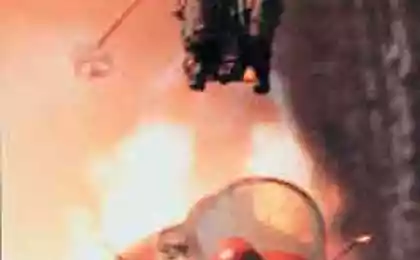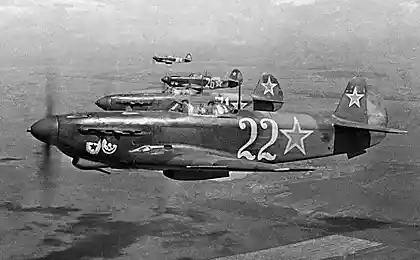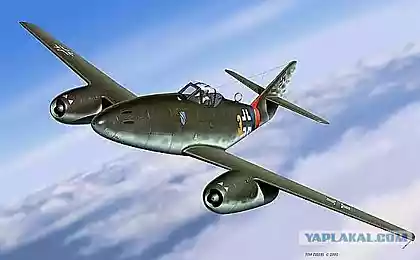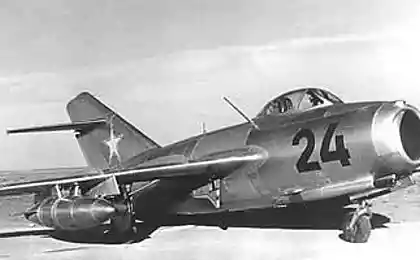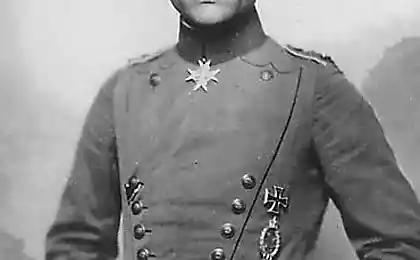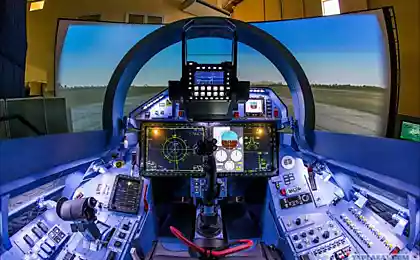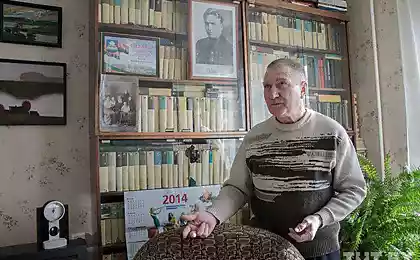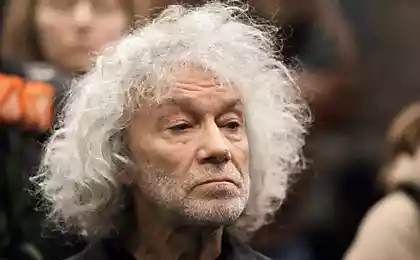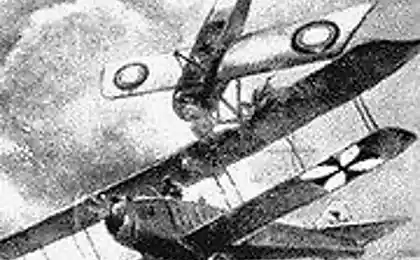1605
Adventure-pilot ace
In the history of Soviet aviation names of many outstanding pilots is now unjustly forgotten. A typical example of this is one of the most famous pilots of the Russian Army - Ivan Smirnov. Ivan Smirnov was born on January 30th 1895 the 4th child of a peasant family, whose farm was in a small village near the city of Vladimir. Since the beginning of the First World War as a volunteer he enlisted in the army and was sent to the 96th Infantry Regiment Omsk, fought in the 2nd Army of the North - Western Front. For bravery in battle, Ivan Smirnov was introduced to his first award - the Cross of St. George 4-th degree. December 8, 1914 Smirnov was seriously wounded in the right leg machine gun fire and was sent to hospital train to Petrograd. In the hospital he first saw the airplanes taking off from a nearby airfield. Then I was born the decision not to return to the infantry after the treatment, and the transfer to the aircraft. At the beginning of 1915, non - commissioned officer Smirnov was sent to the aviation school in Petrograd, and then - to Moscow. Perfectly mastered the art of aerobatics, Ivan Smirnov was sent to the 19th Squadron corps, where he arrived on September 7, 1916. His first combat sorties Smirnov served with pilot - observer PA Pentko to double "Nieuport-X». The first victory was achieved on 20 December. In order for a special army of 27 December 1916 stated: "December 20, 1916 8 aircraft frontline Air Group Captain Yakobeshvili departed for combat and photographing. During the flight, they stood four battle, the two enemy airplanes were shot down, one - ensign NK Kokorin, the other - the senior non - commissioned officer IV Smirnov with the observer Shtabs - captain Pentke. Enemy pilots (three officers and one non - commissioned officer) killed by rifle bullets in the air ... ".
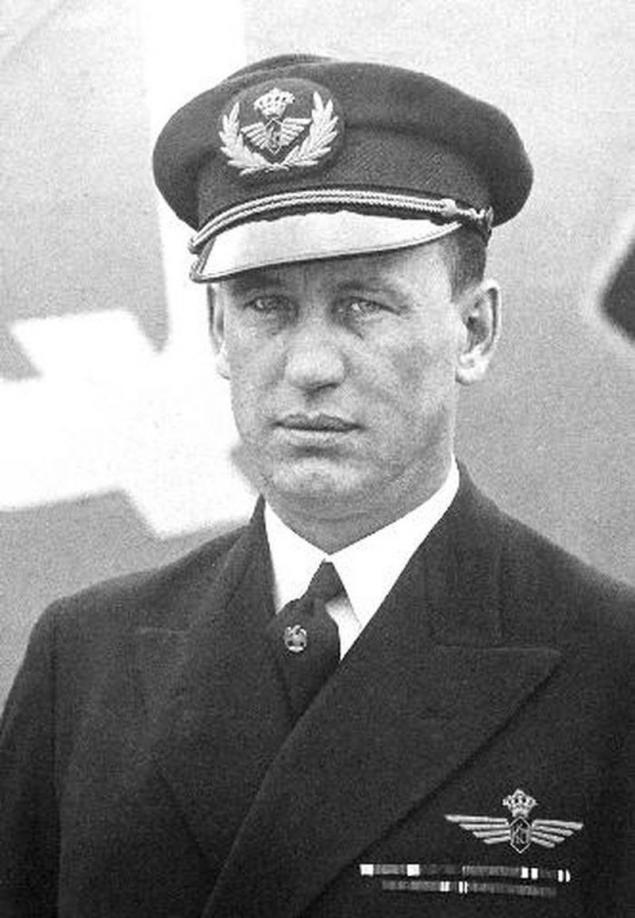
For destroying enemy aircraft Smirnov was presented to the first officer's rank of ensign.
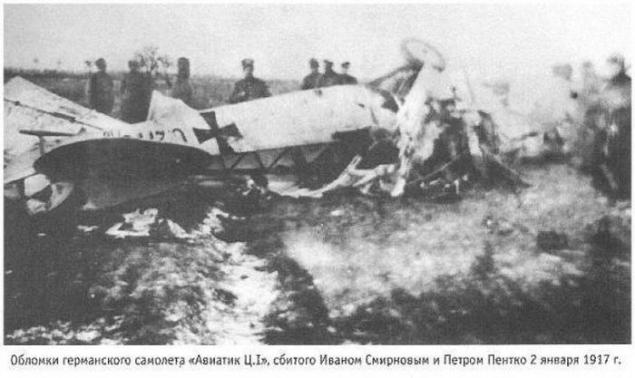
In March 1917, the 1st Combat Air Group was transferred to the southern sector of the South - Western Front in Galicia, where Smirnov spent several air battles. For the battle of April 16 he was introduced to the Cross of St. George 3rd degree. April 19 Smirnov knocks another plane, for which he was nominated for the George Cross 2nd class. 20 May Ensign Smirnov made 42 sorties and was promoted to the rank of "military pilot" for distinguished service. May 21, as an additional reward, he was given a month's leave. As part of the back on 20 June.
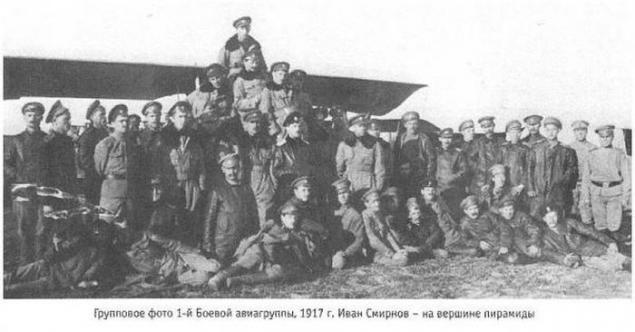
Russian pilot - Fighter IV Smirnov was probably the only driver to have reached, on airplanes - monoplanes «Morane - Saulnier I», 5 or more aerial victories. Soon after the resumption of flights Smirnov was in the thick of things. April 18, he led the fight over the village Trostianets, firing 120 bullets at the enemy from a distance of 50 meters. The German managed to escape in the cloud, and in a car after landing Smirnov found holes in the wings and fuselage. On April 29, the same day he made seven missions and once entered the fight with the enemy airplane in the area and Tovstobaby Virhorov. According to Smirnov, he managed to shoot down the enemy, but victory will not count as an enemy of the damaged car was able to hold on to its territory. His 2nd official victory Ivan Smironov won 2 May 1917. Acting on "Moran - monocoque," he Warrant Officer 4 Corps squadron Malyshev engaged in battle with the German "Albatross". Machine gun Malyshev proved faulty, and he had to beat in short bursts. The main burden of the battle fell to Smirnov, who was released in the enemy about 100 bullets at a height of 1300 meters. Then the gun from him and out of order, but he quickly remedy the problem and managed to force the enemy to land on the Russian territory. Both the German aviator (pilot - soldiers and wounded in the leg Observer - officer) were captured Marines, but the pilot before it had time to burn his car. Smirnov after the fight did not deny himself the pleasure to be photographed "in memory" with an enemy pilot Alfred Hefti.
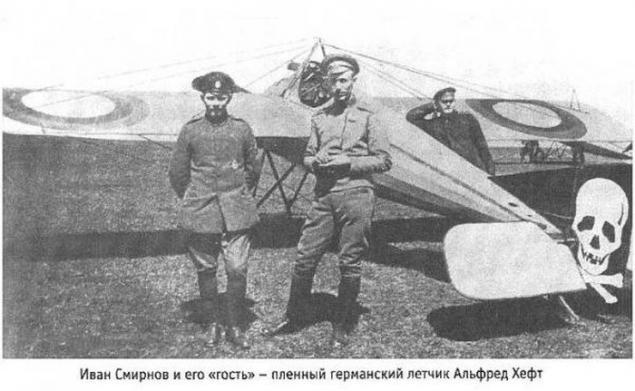
But the main reward for good work in the fight became ensigns, although representation of this title has been submitted to the authorities in early 1917.
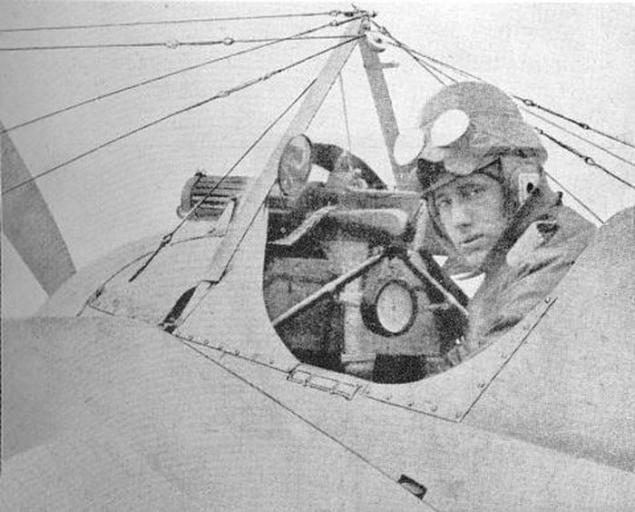
«Morane - Saulnier» Ensign Ivan Smirnov, 19th KAO, 1917

In the summer of 1917 1st Combat Air Group armies of the South - Western Front (2nd, 4th and 19th Aviation Hull units) under the command of Captain A. Kazakov, who had armed fighters "Nieuport", operated in southern Galicia , the same place where two parties Squadron airships "Ilya Muromets". One of the objectives of pilots - fighters were guarding "Muromtsev." So, June 19 at the support of one of the machines were sent three fighter 19th KAO. August 20, the first flight of the group "Muromtsev" ("Kiev" - Lieutenant Colonel JS Bashko and XVIII-th - Captain AV Serednitskogo) guarded by fighters of the 1st Combat Air Group. Among the pilots 4 "Nieuport" accompanying "Murom" and Ensign was Smirnov. In November 1917, the group appeared in the diary a summary of the aircraft shot down by different pilots since its formation. The third victory there Smirnova dated August 3, and already 10 August Ivan Smirnov scored another victory. September 11 Ensign Smirnov shot down near Balin enemy aircraft type "Albatross SH" (crew captured). Next, already the 7th in a row, victory was won on October 28. That's how it was reported in the newspapers: "... In the area of goose (South - Western Front), there was a dogfight three German" Brandenburg "with two Russian fighters of the 19th Corps squadron, which was piloted by Ensign Smirnov and non - commissioned officer Lipsky. Smirnov knocked down one of the enemy's airplanes, which fell in flames in the rear of Russian troops near the village of Green Sloboda. The other two German airplanes turned back, trying to get away. Pursuing them Lipsky knocked the second "Brandenburg", which fell on the barbed wire near the village green. The third enemy plane left in his rear with a large reduction and sat on - apparently forced, the village Kruzhivinka ... "October 31 order of the 7th Army, for Defeat gained by this battle, Smirnov and Lehmann were awarded the Order of St. George 4-th degree. In November 1917, the flights 1st Combat Air Group were rare from - the weather. However, fighting continued. So, November 10 Ensign IV Smirnov attacked and shot down a German plane, which soon fell to the ground. The commander of the WWF Russian Colonel V. Tkachev sent November 14 following telegram: «Nieuport 17" from 19th KAO, July - September 1917.
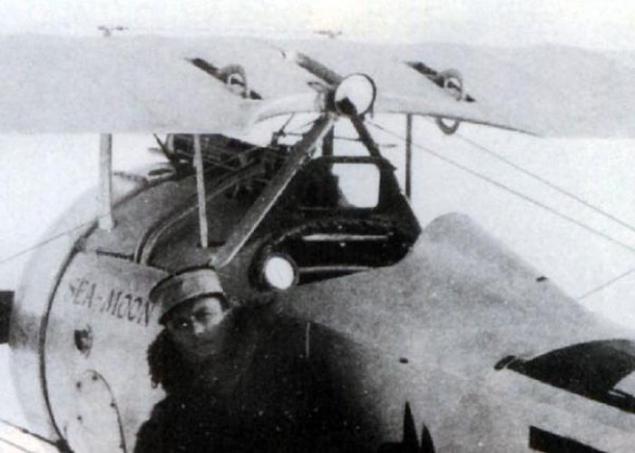
"The 9th victory Ensign Smirnova in the days of the coming destruction and deadly danger for our long-suffering motherland gives us confidence that our valiant pilots until the end fulfill their duty and remain in his heavy but glorious post, weaving new laurels in the crown of glory of our own aircraft" . November 13 Lieutenant Colonel A. Kozak and Ensign IM Smirnov attack German biplane which left a sharp decline in the front line. After 2 hours, another pair of pilots attacked enemy planes. In the ensuing dogfight, Ivan Smirnov shot down another plane, as it turned out - the last one. In total, during his stay at the fronts of the First World War, Ivan Smirnov shot down 12 enemy aircraft, 10 of which - formally (with himself was not hit by even once). «Spad VII» from the 19th KAO, September - December 1917.

... The war ended, the expansion of the army and the Bolshevik propaganda touched the 1st Combat Air Group, which soon ceased to exist as a fighting unit. Increasingly, in the soldiers' meetings and assemblies were calls to deal with the air group officers. And it was not just about a career officer, and former pilots - soldiers who have received the first officer's rank for distinguished service. It was impossible to delay, and Smirnov, on the night of December 14 leaves the air group.
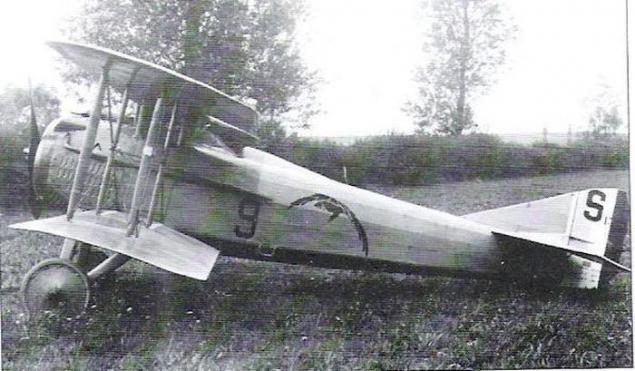
After a long ordeal, Ivan Smirnov was in England, where he became a pilot - instructor in Nezerevone. Soon the school was closed, and together with other Russian pilots Ivan Smirnov parahod sailed to the south of Russia at the disposal of General Denikin. Arriving in Novorossiysk he met his old friends there. Having understood from conversations with them, that the position of Denikin catastrophic Smirnov returned to England.
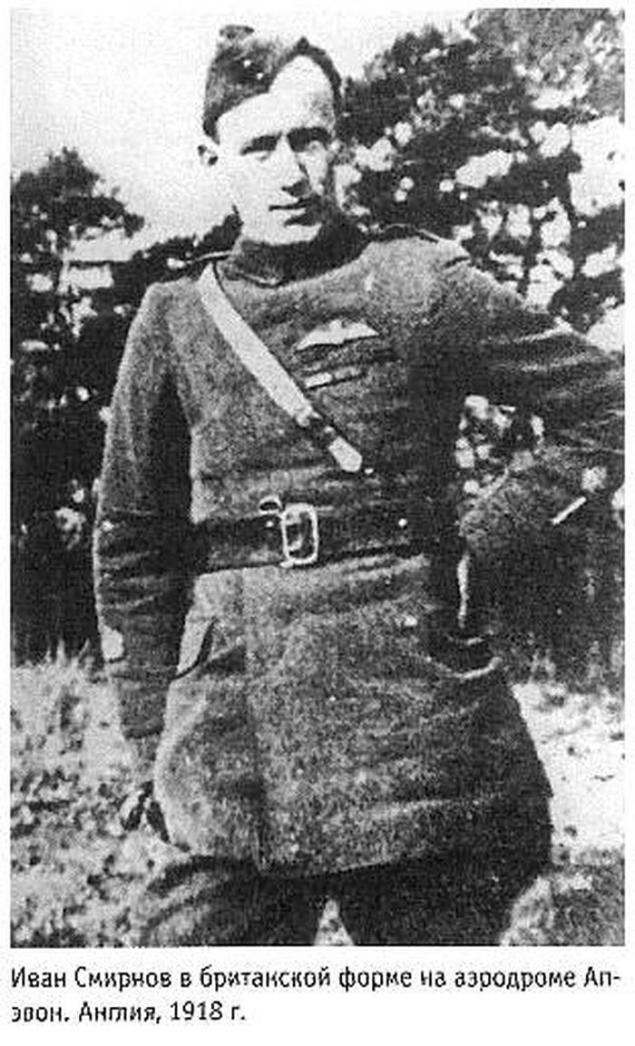
Before the Civil War, he was assistant military attaché - the Air Force and the chief - pilot of the Russian government in Paris. More - less reliable information about the life Smirnova begin to appear only in 1920, when he settled in the aircraft factory of the company "Handley - Page 'in Croydon. There Ivan was a simple worker, but in the Belgian company SNETA he again became a pilot. However, in its hangar there was a fire, the plane was burned, and Smirnov was again unemployed. Then Ivan moved to Holland, where he began a pilot in the Royal Dutch Airlines (KLM). A quarter-century after working in this company, he often found himself in a difficult situation. So, October 19, 1923 Smirnov with 3 passengers flew to the "Fokker F.III» airport Shipholl. From - due to strong wind and engine failure Smirnov had to make an emergency landing on a sandbank channel called "Goodwin Sands." Wrecked car nearly flooded the tide when aid to the distress came the occasional vagrant, who led them to the nearest town. After this incident, Smirnova colleagues nicknamed him "Earl Goodwin." In 1928, Ivan Smirnov was the first airline pilot, paving the flight from Amsterdam to the Dutch East - India and back (18 000 miles). He continued to work on this route until 1940, after which the authorities left it to the East - India engaged in local air travel.
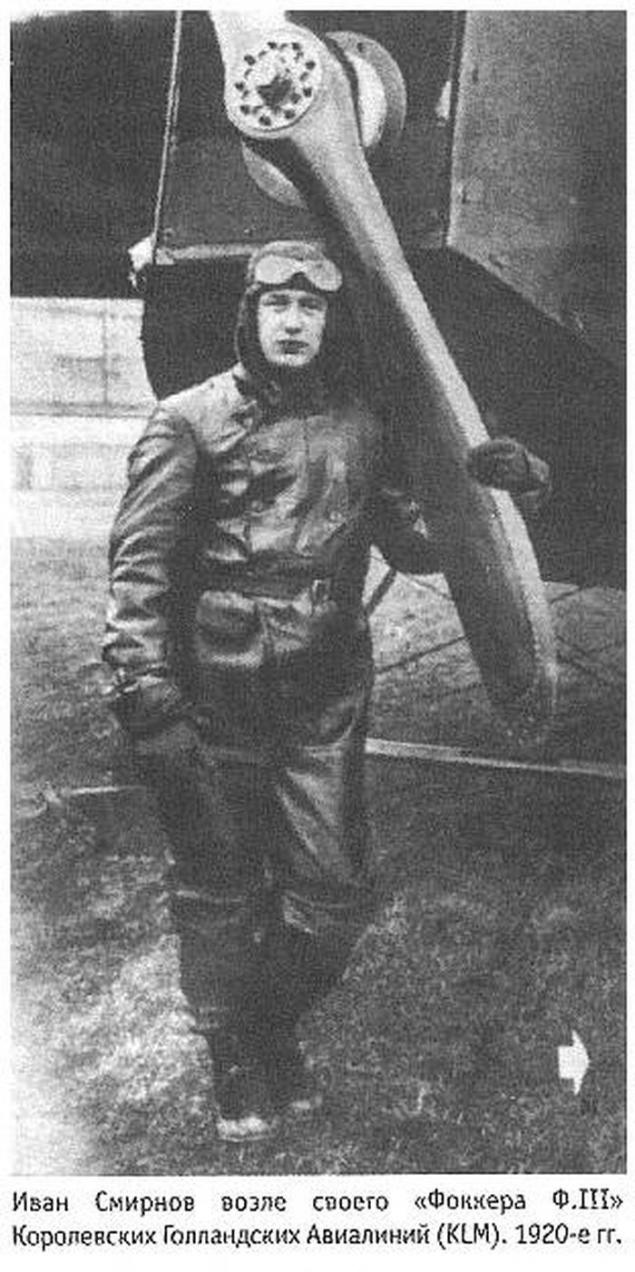
It was at a time when Smirnov worked in Indonesia, have been one of the most dramatic and mysterious episodes in his biography. In 1940, the Second World War has come to this "tropical paradise" and Smirnov enlisted in the Dutch military aviation as a captain. In December 1941, Japan started hostilities against the United States and the United Kingdom. During the rapid onset of samurai mastered the entire South - East Asia and landed on the islands of the Indonesian archipelago. Anglo - Americans suffered one defeat after another, and the local Europeans in terror before the "yellow invasion" in a hurry to move to Australia. In the early spring of 1942 Smirnov had a chance to take part in the evacuation of the personnel and property of the Dutch airline from the island of Java. March 3, 1942 (3 days before the occupation of the island by Japanese troops) they manned transport aircraft "Douglas» DC-3 Bandung left and headed for the most Avstraliyu.Pered departure aerodrome manager, Mr. Weiss Smirnov handed the sealed box of - cigar. The manager is not dedicated to the pilot contents of the parcel, but ordered to keep an eye on her. The box should have handed over to representatives of the Australian Bank in Broome (Australia). Smirnov put the parcel in a box with medicines. On board the "Douglas", except for the crew, were 9 more passengers, including a woman with a 1-year-old 5 child in her arms. At dawn, the plane reached the Australian coast, but when approaching the Broom was attacked by 3 Japanese fighters. Smirnov received several wounds - in the arm and thigh, some passengers were injured. To leave - the shelling, Smirnov had sent the plane into a spin to the ground and brought him out of a bend. But it broke one of the engines. Again Smirnov found a way out of a seemingly hopeless situation. He managed to land the plane, so that the engine was in hot water, and the fuselage - on the beach. Coastal waves knocked down the flames, and the plane caught fire not.
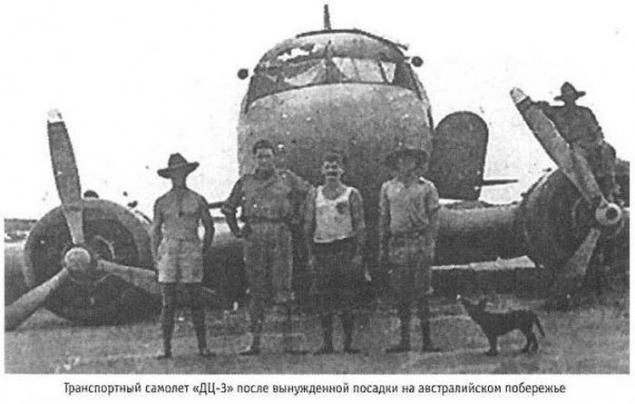
After the Japanese fighters were out of sight, radio operator set up the transmitter and began to send broadcast signals «SOS». Present at the official board airlines van Ramond Smirnov received permission to bring ashore the mail and documents. In the words of Smirnov, it was then that he gave the officer a mysterious parcel. Further, according to Mr. van Ramond, at the moment when he got out of the plane, I was a wave, and a few packets dropped in the water. It is clear that in such a dramatic situation, no one paid any attention to such a minor nuisance. The surviving members of the crew and passengers of the canopies erected a tent in the dunes for the wounded. Smirnov had sent 2 people in search of fresh water. The messengers came back with nothing. The same evening, the child's mother had died and another passenger. The next morning, he died of his wounds 2nd pilot. After another day Smirnov sent 4 people to seek help - in the hope that someone - one of them gets to Broome. Fortunately, it soon became clear that an idle aborigine saw the plane fell on the coast. To approach him, he was afraid, but reported it to the authorities in the bay of the Beagle. March 6 from there flew the plane that dropped the camp food, medicine and a note that said that the rescue group to arrive at the crash site in the evening.

This Douglas was later repaired, flew to the Philippines, was bought and taken to Holland. He is now in the museum named after his heroic Russian pilot.
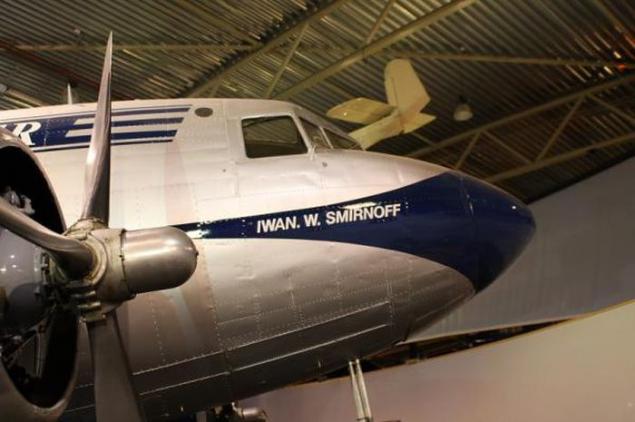
By the time the rescue baby died and his father. Survivors of the ill-fated flight were taken to Beagle Bay, and from there - to Broome. After a while Smirnov was taken to Melbourne, where he was visited by an investigator for particularly important cases of the representative of the State Bank. They asked the pilot to report the location of a sealed box. Smirnov explained to them his version. Van Ramond could neither confirm nor deny the version of Smirnov. Meanwhile, well-known all over the Broom drifter Jack Palmer, who took part in the rescue of the crew of the DC-3, unexpectedly announced the commandant's office and announced his intention to join the army. Palmer used to be wound on his lugger around the coast, and took possession of all that bad lay. It was rumored that he again visited the crash site - before the left to the investigation team. The chief commandant Clifford Gibson personally visited newfound patriot and during the conversation accidentally knocked over the salt shaker standing on the kitchen table. Great was his surprise when, among the hills of salt found some diamonds! The case received wide publicity. It turned out that in the cigar box contains 300 grams of the precious mineral. But no further searches to no avail. Jack Palmer steadfastly denied any involvement in the disappearance of state property. About 250 grams of diamonds worth more than $ 10 million had disappeared without a trace. Despite the difficulties of wartime, the investigation dragged on for several years. Detectives continued unsuccessfully "shepherd" 3 suspects - Palmer, van Ramond and Smirnov, but their modest life seemed to be brushed aside the possibility of owning what - or treasures. Smirnov was assigned to the headquarters of the American shipping company in Brisbane (Australia), where he, in spite of the official ban on age and injuries, flying as a captain in the composition 317th Transportation Group.

After the war Ivan continued his service in the Netherlands senior airline pilot, and only in 1949 to ban the doctors went on a well-deserved retirement, remained in the company of a consultant. Only with his death, the detectives finally had to admit that the 10 millionth pile of diamonds irrevocably vanished in the waves of the Pacific Ocean ... senior non-commissioned officer - Ensign of 10/05/1916 - Order of the armies of the Southwestern Front number 506 of 04/30/1917 for the city military distinction (PAF production was approved by 11.15.1917, the). Military pilot - the Order of the Supreme Commander of the number 599 of 07/09/1917, the battle for the differences. Awards Cross of St. George 4-th degree №89155- Order of the 2nd Army № 224 from 11.13.1914, the "for exploration in the period from 10 to 24 October 1914"; 3rd degree № 132836- Order of the 7th Army №735 from 05.26.1917, the "battle of the 16 April 1917"; 2nd Art. - Order of the 7th Division Aviation №398 from 12.24.1917, the "for the fact that April 19, 1917 rising to harass enemy aircraft attacked and knocked him down in the area of the 3rd Caucasian Corps"; 1st degree - the Order of the 7th Division Aircraft number 398 from 12.24.1917, the "for feats of arms from 10 August to 18 September 1917 and for shooting down two enemy aircraft." The Order of St. George 4-th degree - the Order of the 7th Army № 1765 from 10.31.1917, the "for the fact that on September 11 of 1917, rising fighter aircraft to harass enemy aircraft caught up with him in the area of m. Balin and after dashing fight knocked him down with machine gun fire. German plane came down in our location and captured the whole form. The enemy mortally wounded pilot and observer were taken prisoner. " He was also presented to the Order of St. Vladimir 4-th degree with swords and bow and George Arms (presentation was not considered, and was returned to the Main Staff of the Petrograd Duma George).
Source: masterok.livejournal.com

For destroying enemy aircraft Smirnov was presented to the first officer's rank of ensign.

In March 1917, the 1st Combat Air Group was transferred to the southern sector of the South - Western Front in Galicia, where Smirnov spent several air battles. For the battle of April 16 he was introduced to the Cross of St. George 3rd degree. April 19 Smirnov knocks another plane, for which he was nominated for the George Cross 2nd class. 20 May Ensign Smirnov made 42 sorties and was promoted to the rank of "military pilot" for distinguished service. May 21, as an additional reward, he was given a month's leave. As part of the back on 20 June.

Russian pilot - Fighter IV Smirnov was probably the only driver to have reached, on airplanes - monoplanes «Morane - Saulnier I», 5 or more aerial victories. Soon after the resumption of flights Smirnov was in the thick of things. April 18, he led the fight over the village Trostianets, firing 120 bullets at the enemy from a distance of 50 meters. The German managed to escape in the cloud, and in a car after landing Smirnov found holes in the wings and fuselage. On April 29, the same day he made seven missions and once entered the fight with the enemy airplane in the area and Tovstobaby Virhorov. According to Smirnov, he managed to shoot down the enemy, but victory will not count as an enemy of the damaged car was able to hold on to its territory. His 2nd official victory Ivan Smironov won 2 May 1917. Acting on "Moran - monocoque," he Warrant Officer 4 Corps squadron Malyshev engaged in battle with the German "Albatross". Machine gun Malyshev proved faulty, and he had to beat in short bursts. The main burden of the battle fell to Smirnov, who was released in the enemy about 100 bullets at a height of 1300 meters. Then the gun from him and out of order, but he quickly remedy the problem and managed to force the enemy to land on the Russian territory. Both the German aviator (pilot - soldiers and wounded in the leg Observer - officer) were captured Marines, but the pilot before it had time to burn his car. Smirnov after the fight did not deny himself the pleasure to be photographed "in memory" with an enemy pilot Alfred Hefti.

But the main reward for good work in the fight became ensigns, although representation of this title has been submitted to the authorities in early 1917.

«Morane - Saulnier» Ensign Ivan Smirnov, 19th KAO, 1917

In the summer of 1917 1st Combat Air Group armies of the South - Western Front (2nd, 4th and 19th Aviation Hull units) under the command of Captain A. Kazakov, who had armed fighters "Nieuport", operated in southern Galicia , the same place where two parties Squadron airships "Ilya Muromets". One of the objectives of pilots - fighters were guarding "Muromtsev." So, June 19 at the support of one of the machines were sent three fighter 19th KAO. August 20, the first flight of the group "Muromtsev" ("Kiev" - Lieutenant Colonel JS Bashko and XVIII-th - Captain AV Serednitskogo) guarded by fighters of the 1st Combat Air Group. Among the pilots 4 "Nieuport" accompanying "Murom" and Ensign was Smirnov. In November 1917, the group appeared in the diary a summary of the aircraft shot down by different pilots since its formation. The third victory there Smirnova dated August 3, and already 10 August Ivan Smirnov scored another victory. September 11 Ensign Smirnov shot down near Balin enemy aircraft type "Albatross SH" (crew captured). Next, already the 7th in a row, victory was won on October 28. That's how it was reported in the newspapers: "... In the area of goose (South - Western Front), there was a dogfight three German" Brandenburg "with two Russian fighters of the 19th Corps squadron, which was piloted by Ensign Smirnov and non - commissioned officer Lipsky. Smirnov knocked down one of the enemy's airplanes, which fell in flames in the rear of Russian troops near the village of Green Sloboda. The other two German airplanes turned back, trying to get away. Pursuing them Lipsky knocked the second "Brandenburg", which fell on the barbed wire near the village green. The third enemy plane left in his rear with a large reduction and sat on - apparently forced, the village Kruzhivinka ... "October 31 order of the 7th Army, for Defeat gained by this battle, Smirnov and Lehmann were awarded the Order of St. George 4-th degree. In November 1917, the flights 1st Combat Air Group were rare from - the weather. However, fighting continued. So, November 10 Ensign IV Smirnov attacked and shot down a German plane, which soon fell to the ground. The commander of the WWF Russian Colonel V. Tkachev sent November 14 following telegram: «Nieuport 17" from 19th KAO, July - September 1917.

"The 9th victory Ensign Smirnova in the days of the coming destruction and deadly danger for our long-suffering motherland gives us confidence that our valiant pilots until the end fulfill their duty and remain in his heavy but glorious post, weaving new laurels in the crown of glory of our own aircraft" . November 13 Lieutenant Colonel A. Kozak and Ensign IM Smirnov attack German biplane which left a sharp decline in the front line. After 2 hours, another pair of pilots attacked enemy planes. In the ensuing dogfight, Ivan Smirnov shot down another plane, as it turned out - the last one. In total, during his stay at the fronts of the First World War, Ivan Smirnov shot down 12 enemy aircraft, 10 of which - formally (with himself was not hit by even once). «Spad VII» from the 19th KAO, September - December 1917.

... The war ended, the expansion of the army and the Bolshevik propaganda touched the 1st Combat Air Group, which soon ceased to exist as a fighting unit. Increasingly, in the soldiers' meetings and assemblies were calls to deal with the air group officers. And it was not just about a career officer, and former pilots - soldiers who have received the first officer's rank for distinguished service. It was impossible to delay, and Smirnov, on the night of December 14 leaves the air group.

After a long ordeal, Ivan Smirnov was in England, where he became a pilot - instructor in Nezerevone. Soon the school was closed, and together with other Russian pilots Ivan Smirnov parahod sailed to the south of Russia at the disposal of General Denikin. Arriving in Novorossiysk he met his old friends there. Having understood from conversations with them, that the position of Denikin catastrophic Smirnov returned to England.

Before the Civil War, he was assistant military attaché - the Air Force and the chief - pilot of the Russian government in Paris. More - less reliable information about the life Smirnova begin to appear only in 1920, when he settled in the aircraft factory of the company "Handley - Page 'in Croydon. There Ivan was a simple worker, but in the Belgian company SNETA he again became a pilot. However, in its hangar there was a fire, the plane was burned, and Smirnov was again unemployed. Then Ivan moved to Holland, where he began a pilot in the Royal Dutch Airlines (KLM). A quarter-century after working in this company, he often found himself in a difficult situation. So, October 19, 1923 Smirnov with 3 passengers flew to the "Fokker F.III» airport Shipholl. From - due to strong wind and engine failure Smirnov had to make an emergency landing on a sandbank channel called "Goodwin Sands." Wrecked car nearly flooded the tide when aid to the distress came the occasional vagrant, who led them to the nearest town. After this incident, Smirnova colleagues nicknamed him "Earl Goodwin." In 1928, Ivan Smirnov was the first airline pilot, paving the flight from Amsterdam to the Dutch East - India and back (18 000 miles). He continued to work on this route until 1940, after which the authorities left it to the East - India engaged in local air travel.

It was at a time when Smirnov worked in Indonesia, have been one of the most dramatic and mysterious episodes in his biography. In 1940, the Second World War has come to this "tropical paradise" and Smirnov enlisted in the Dutch military aviation as a captain. In December 1941, Japan started hostilities against the United States and the United Kingdom. During the rapid onset of samurai mastered the entire South - East Asia and landed on the islands of the Indonesian archipelago. Anglo - Americans suffered one defeat after another, and the local Europeans in terror before the "yellow invasion" in a hurry to move to Australia. In the early spring of 1942 Smirnov had a chance to take part in the evacuation of the personnel and property of the Dutch airline from the island of Java. March 3, 1942 (3 days before the occupation of the island by Japanese troops) they manned transport aircraft "Douglas» DC-3 Bandung left and headed for the most Avstraliyu.Pered departure aerodrome manager, Mr. Weiss Smirnov handed the sealed box of - cigar. The manager is not dedicated to the pilot contents of the parcel, but ordered to keep an eye on her. The box should have handed over to representatives of the Australian Bank in Broome (Australia). Smirnov put the parcel in a box with medicines. On board the "Douglas", except for the crew, were 9 more passengers, including a woman with a 1-year-old 5 child in her arms. At dawn, the plane reached the Australian coast, but when approaching the Broom was attacked by 3 Japanese fighters. Smirnov received several wounds - in the arm and thigh, some passengers were injured. To leave - the shelling, Smirnov had sent the plane into a spin to the ground and brought him out of a bend. But it broke one of the engines. Again Smirnov found a way out of a seemingly hopeless situation. He managed to land the plane, so that the engine was in hot water, and the fuselage - on the beach. Coastal waves knocked down the flames, and the plane caught fire not.

After the Japanese fighters were out of sight, radio operator set up the transmitter and began to send broadcast signals «SOS». Present at the official board airlines van Ramond Smirnov received permission to bring ashore the mail and documents. In the words of Smirnov, it was then that he gave the officer a mysterious parcel. Further, according to Mr. van Ramond, at the moment when he got out of the plane, I was a wave, and a few packets dropped in the water. It is clear that in such a dramatic situation, no one paid any attention to such a minor nuisance. The surviving members of the crew and passengers of the canopies erected a tent in the dunes for the wounded. Smirnov had sent 2 people in search of fresh water. The messengers came back with nothing. The same evening, the child's mother had died and another passenger. The next morning, he died of his wounds 2nd pilot. After another day Smirnov sent 4 people to seek help - in the hope that someone - one of them gets to Broome. Fortunately, it soon became clear that an idle aborigine saw the plane fell on the coast. To approach him, he was afraid, but reported it to the authorities in the bay of the Beagle. March 6 from there flew the plane that dropped the camp food, medicine and a note that said that the rescue group to arrive at the crash site in the evening.

This Douglas was later repaired, flew to the Philippines, was bought and taken to Holland. He is now in the museum named after his heroic Russian pilot.

By the time the rescue baby died and his father. Survivors of the ill-fated flight were taken to Beagle Bay, and from there - to Broome. After a while Smirnov was taken to Melbourne, where he was visited by an investigator for particularly important cases of the representative of the State Bank. They asked the pilot to report the location of a sealed box. Smirnov explained to them his version. Van Ramond could neither confirm nor deny the version of Smirnov. Meanwhile, well-known all over the Broom drifter Jack Palmer, who took part in the rescue of the crew of the DC-3, unexpectedly announced the commandant's office and announced his intention to join the army. Palmer used to be wound on his lugger around the coast, and took possession of all that bad lay. It was rumored that he again visited the crash site - before the left to the investigation team. The chief commandant Clifford Gibson personally visited newfound patriot and during the conversation accidentally knocked over the salt shaker standing on the kitchen table. Great was his surprise when, among the hills of salt found some diamonds! The case received wide publicity. It turned out that in the cigar box contains 300 grams of the precious mineral. But no further searches to no avail. Jack Palmer steadfastly denied any involvement in the disappearance of state property. About 250 grams of diamonds worth more than $ 10 million had disappeared without a trace. Despite the difficulties of wartime, the investigation dragged on for several years. Detectives continued unsuccessfully "shepherd" 3 suspects - Palmer, van Ramond and Smirnov, but their modest life seemed to be brushed aside the possibility of owning what - or treasures. Smirnov was assigned to the headquarters of the American shipping company in Brisbane (Australia), where he, in spite of the official ban on age and injuries, flying as a captain in the composition 317th Transportation Group.

After the war Ivan continued his service in the Netherlands senior airline pilot, and only in 1949 to ban the doctors went on a well-deserved retirement, remained in the company of a consultant. Only with his death, the detectives finally had to admit that the 10 millionth pile of diamonds irrevocably vanished in the waves of the Pacific Ocean ... senior non-commissioned officer - Ensign of 10/05/1916 - Order of the armies of the Southwestern Front number 506 of 04/30/1917 for the city military distinction (PAF production was approved by 11.15.1917, the). Military pilot - the Order of the Supreme Commander of the number 599 of 07/09/1917, the battle for the differences. Awards Cross of St. George 4-th degree №89155- Order of the 2nd Army № 224 from 11.13.1914, the "for exploration in the period from 10 to 24 October 1914"; 3rd degree № 132836- Order of the 7th Army №735 from 05.26.1917, the "battle of the 16 April 1917"; 2nd Art. - Order of the 7th Division Aviation №398 from 12.24.1917, the "for the fact that April 19, 1917 rising to harass enemy aircraft attacked and knocked him down in the area of the 3rd Caucasian Corps"; 1st degree - the Order of the 7th Division Aircraft number 398 from 12.24.1917, the "for feats of arms from 10 August to 18 September 1917 and for shooting down two enemy aircraft." The Order of St. George 4-th degree - the Order of the 7th Army № 1765 from 10.31.1917, the "for the fact that on September 11 of 1917, rising fighter aircraft to harass enemy aircraft caught up with him in the area of m. Balin and after dashing fight knocked him down with machine gun fire. German plane came down in our location and captured the whole form. The enemy mortally wounded pilot and observer were taken prisoner. " He was also presented to the Order of St. Vladimir 4-th degree with swords and bow and George Arms (presentation was not considered, and was returned to the Main Staff of the Petrograd Duma George).
Source: masterok.livejournal.com
Disability is not an obstacle (10 photos)
Favorite actors of the series "Ellen and the boys' 19 years later

